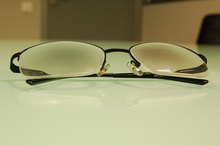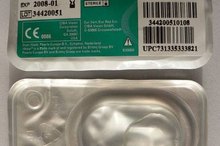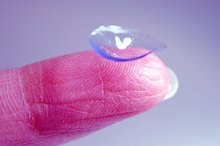How to Understand Power in Contact Lenses
If you wear contact lenses, you may be curious about some of the codes and numbers imprinted on the lens packaging. Optometrists prescribe contact lenses with different degrees of power to correct various vision problems. The Federal Trade Commission enforces rules that enable contact lens wearers to obtain their contact lens prescription to purchase contacts wherever they choose 1. Once you understand what the abbreviations and numbers mean, you will have a better understanding of your individual contact lens prescription 2.
Learn the basic Latin terminology that optometrists use on prescriptions. Ocular dexter or OD refers to the right eye and ocular sinister or OS refers to the left eye. If you are among the individuals with the same prescription for both eyes, you may see an OU for ocular uterque.
How to Find Out My Glasses Prescription
Learn More
Understand the sphere power of your lenses. Sphere power is the primary power in the lens to correct either hyperopia, farsightedness, or myopia, nearsightedness. Sphere power is positive if you are farsighted and negative if you are nearsighted. The unit of measure for sphere power is a dioptor, or D. Contact lens manufacturers make lenses in 0.25 D power increments. The greater the sphere power is from zero, the stronger the prescription.
Consider the cylinder power if your prescription has one 1. Cylinder power is the power to correct astigmatism. This power also is in diopters and just like sphere power, the greater the number is from zero the stronger the prescription.
What Do Prescription Numbers Mean in Eye Glasses?
Learn More
Recognize the "add" power, if you wear bifocal lenses. Add power is an additional corrective power on part of the lens to assist with reading and viewing objects close-up. Add power is always positive.
Related Articles
References
- All About Vision: Understanding Your Contact Lens Prescription
- Kessel L, Andresen J, Tendal B, Erngaard D, Flesner P, Hjortdal J. Toric intraocular lenses in the correction of astigmatism during cataract surgery: a systematic review and meta-analysis. Ophthalmology. 2016;123(2):275-286. doi:10.1016/j.ophtha.2015.10.002
- Federal Trade Commission. The contact lens rule: a guide for prescribers and sellers. Published June 2020.
- Wu YT, Willcox M, Zhu H, Stapleton F. Contact lens hygiene compliance and lens case contamination: A review. Cont Lens Anterior Eye. 2015;38(5):307-316. doi:10.1016/j.clae.2015.04.007
- Cope JR, Collier SA, Srinivasan K, et al. Contact lens-related corneal infections - United States, 2005-2015. MMWR Morb Mortal Wkly Rep. 2016;65(32):817-20. doi:10.15585/mmwr.mm6532a2
- Cope JR, Konne NM, Jacobs DS, et al. Corneal infections associated with sleeping in contact lenses - six cases, United States, 2016-2018. MMWR Morb Mortal Wkly Rep. 2018;67(32):877-881. doi:10.15585/mmwr.mm6732a2
- Lam JSH, Tan G, Tan DTH, Mehta JS. Demographics and behaviour of patients with contact lens-related infectious keratitis in Singapore. Annals Academy of Medicine. 2013;42(10):499-506.
- American Optometric Association. Cost of contact lenses.
Writer Bio
Sharon O'Neil has been writing professionally since 2008. Her work has been published on various websites, including Walden University's Think+Up. She has worked in international business and is a licensed customs broker. She is currently a supervisor with a social service agency that works with families to prevent child abuse and neglect. She obtained a Bachelor of Science in business from Indiana University.








